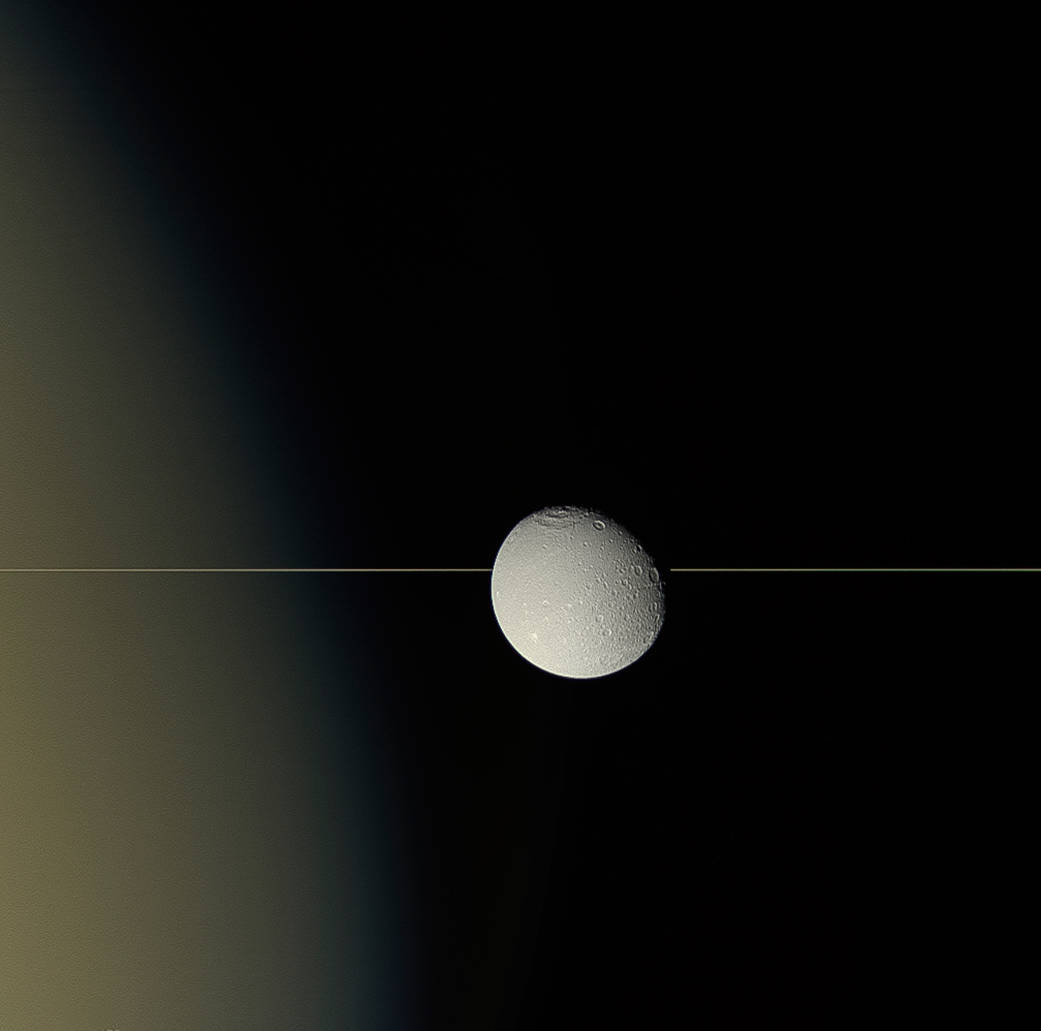Saturn Moon Dione Toes the Line in Stunning NASA Photo

Saturn's icy moon Dione hovers against the thin line of the gas giant's edge-on rings in a gorgeous photo by NASA's Cassini spacecraft.
Though NASA released the natural-color image on Monday (April 9), Cassini actually took it on Aug. 17, 2015, when the probe was about 66,200 miles (106,500 kilometers) from Dione, agency officials said.
The photo reveals just how thin Saturn's rings are in the vertical dimension — just 30 feet (9 meters) in most places, NASA officials said. [See more of Cassini's amazing Saturn photos here]
The 698-mile-wide (1,123 kilometers) Dione is Saturn's fourth-largest moon. It orbits 234,000 miles (377,400 km) away from the gas giant, about the same distance that's between Earth and its moon. But Dione completes one orbit every 2.7 days, compared to 27 days for Earth's moon.
Some scientists think Dione may harbor a subsurface ocean of liquid water, just like fellow Saturn moon Enceladus and the Jupiter satellites Europa, Ganymede and Callisto.
The Cassini orbiter was the centerpiece of the $3.2 billion Cassini-Huygens mission, a collaboration involving NASA, the European Space Agency and the Italian Space Agency. The mission launched in October 1997 and arrived in the Saturn system in the summer of 2004. In January 2005, the piggyback Huygens lander touched down on Saturn's biggest moon, Titan, pulling off the first-ever soft landing on a body in the outer solar system.
The Cassini mothership ended its life with an intentional plunge into Saturn's atmosphere on Sept. 15, 2017. This death dive was performed to ensure that Cassini, which was running low on fuel, would never contaminate Enceladus or Titan with microbes from Earth. Many astrobiologists think that both of these moons may be capable of supporting life as we know it.
Breaking space news, the latest updates on rocket launches, skywatching events and more!
Follow Mike Wall on Twitter @michaeldwall and Google+. Follow us @Spacedotcom, Facebook or Google+. Originally published on Space.com.

Michael Wall is a Senior Space Writer with Space.com and joined the team in 2010. He primarily covers exoplanets, spaceflight and military space, but has been known to dabble in the space art beat. His book about the search for alien life, "Out There," was published on Nov. 13, 2018. Before becoming a science writer, Michael worked as a herpetologist and wildlife biologist. He has a Ph.D. in evolutionary biology from the University of Sydney, Australia, a bachelor's degree from the University of Arizona, and a graduate certificate in science writing from the University of California, Santa Cruz. To find out what his latest project is, you can follow Michael on Twitter.
